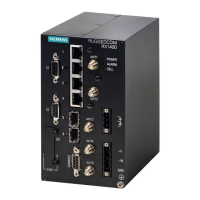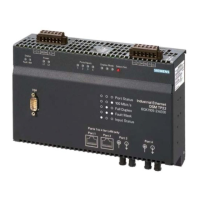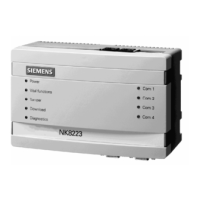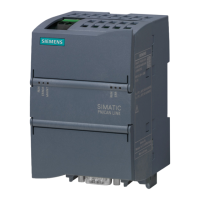Chapter 13
Unicast and Multicast Routing
RUGGEDCOM ROX II
CLI User Guide
578 Managing Gateways for Static VRF Routes
no routing vrf vrf ipv4 route subnet
Where:
• vrf is the chosen VRF instance
• subnet is the subnet (network/prefix) of the static route
3. Type commit and press Enter to save the changes, or type revert and press Enter to abort.
Section13.11.14
Managing Gateways for Static VRF Routes
This section describes how to configure and manage gateways for static VRF routes.
CONTENTS
• Section13.11.14.1, “Viewing a List of Gateways for Static VRF Routes”
• Section13.11.14.2, “Adding a Gateway for a Static VRF Route”
• Section13.11.14.3, “Deleting a Gateway for a Static VRF Route”
Section13.11.14.1
Viewing a List of Gateways for Static VRF Routes
To view a list of gateway addresses assigned to an IPv4 static route, type:
show running-config routing vrf vrf ipv4 route subnet via
Where:
• vrf is the chosen VRF instance.
• subnet is the subnet (network/prefix) of the static route
If gateway addresses have been configured, a table or list similar to the following example appears:
ruggedcom# show running-config routing vrf VRF1 ipv4 route via | tab
NETWORK GW DISTANCE
------------------------------------
192.168.10.0/24
1.9.5.1 -
!
If no gateway addresses have been configured, add addresses as needed. For more information, refer to
Section13.11.14.2, “Adding a Gateway for a Static VRF Route”.
Section13.11.14.2
Adding a Gateway for a Static VRF Route
To add a gateway address for a static VRF route, do the following:
1. Make sure the CLI is in Configuration mode.
2. Add the gateway address by typing:

